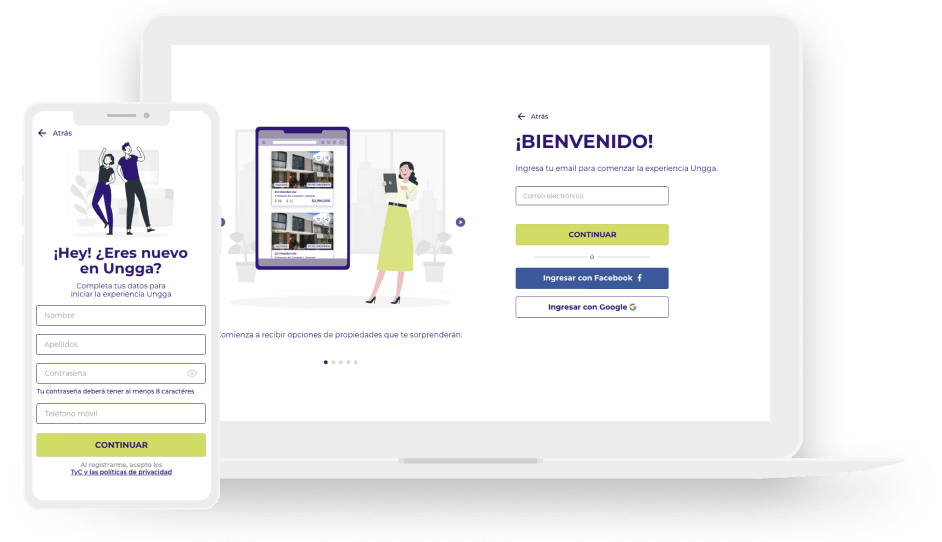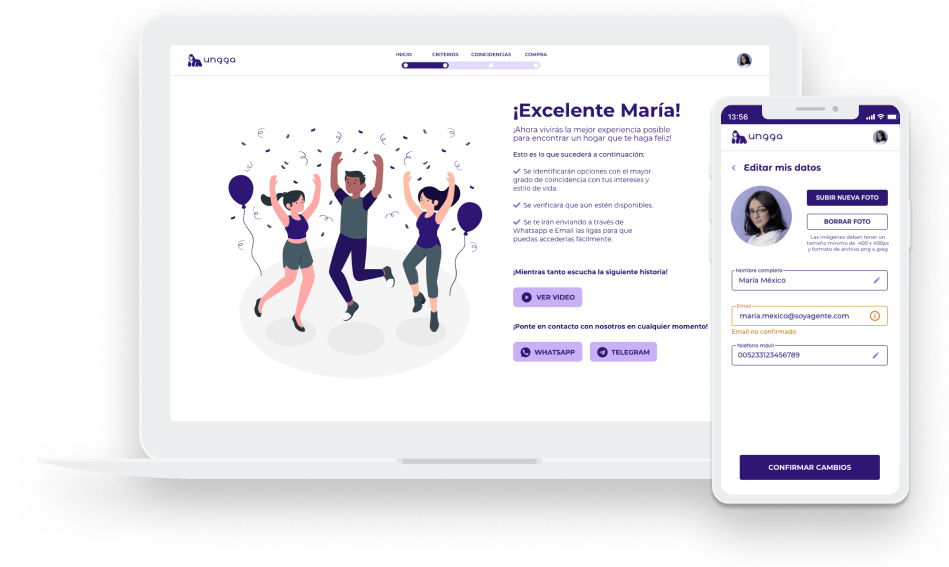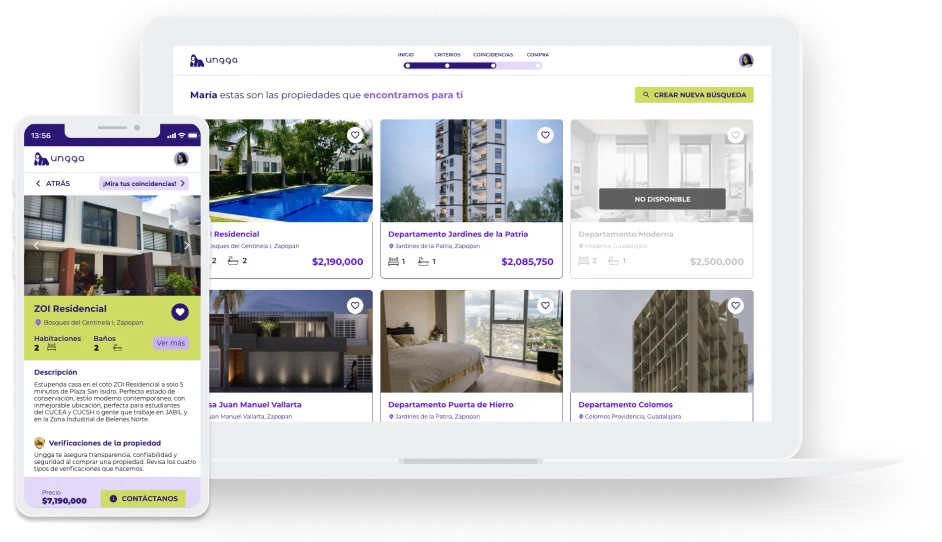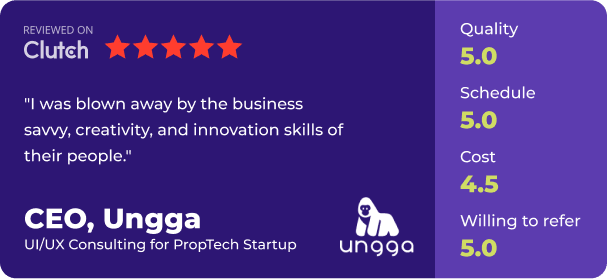Mexico
Backend Dev | Frontend Dev | PM |
PO | UI/UX | QA
PropTech
2021
MVP completed
Background
About Ungga
Ungga is a Real Estate marketplace based in Mexico. Their main goal is to allow customers to find a home that suits their needs, tastes and interests. Personalization and value delivery were the premises that we took into consideration throughout the work process.
The problem
Our client requested a disruptive product to revolutionize the Mexican real estate market. The main pain points a user went through ranged from the overabundance of properties on other sites, the unreliability of the data they displayed, and unclear information.
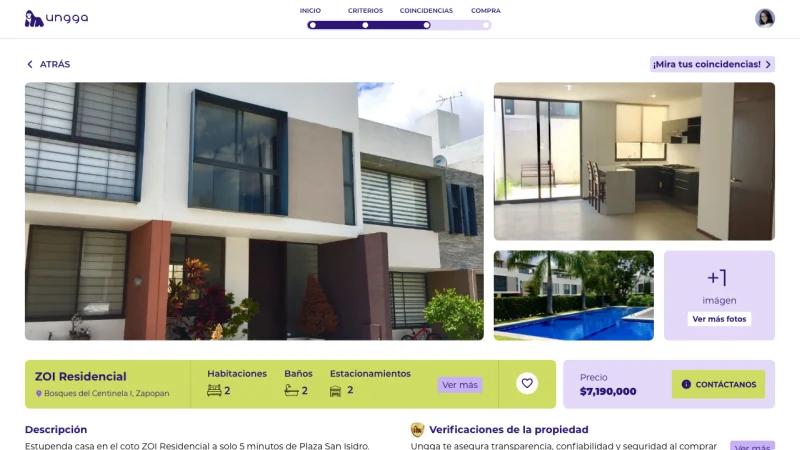
Project Overview
The Challenge
Since the beginning of the project we faced many challenges but the main one was to create a system flexible and dynamic enough, to change as users changed.
The understanding between buyers and sellers became a priority because we were asked to "Humanize" the property search. That is why it was necessary to take a qualitative and quantitative approach. Developing the real estate revolution was a big challenge and Ungga was the main star of the change.
Our Goals
In a few words, our goal was to develop a robust and scalable platform that allows users to find the property that fits their needs during a warm and efficient process.
In the onboarding process -which was established in the MVP- the main objective was that the user could fully define their needs in order to return proposals that fit their requirements.
We were asked for each search result to be a property that would cover not only the infrastructure elements that were requested, but also allow the client to understand the lifestyle that it offers.
Timeline
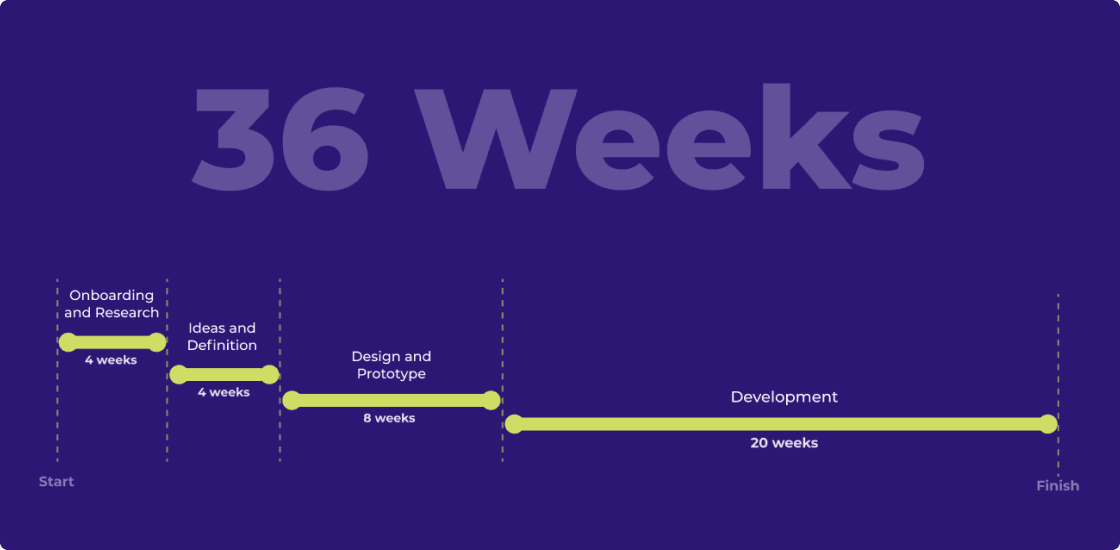
Understanding Our Users
a/ The Research
At the beginning of the project, we researched what the real estate market was already offering to people, in order to find the niche in which we could differentiate ourselves. We analyzed local competitors and the services offered on platforms in other countries. Affinity diagrams were also made to find the profile of our potential consumers.
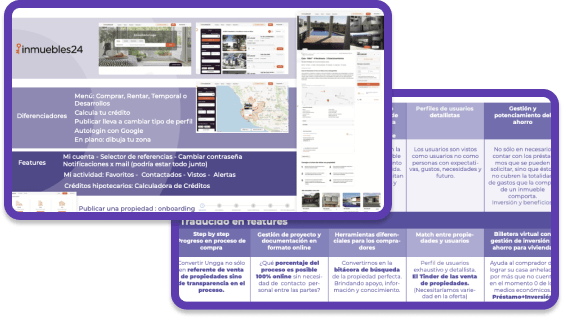
b/ User Personas
At first, we defined two types of user personas: on the one hand, the user who was looking for a house to live in that would meet all the requirements that the "home of their dreams" might have.
On the other hand, the user who needed to sell his house, and that at the time of doing so, could transmit all the value and history that the house carried.
When the MVP was defined, we decided to go ahead with the buyer's path, which responds to what the first user persona needs.
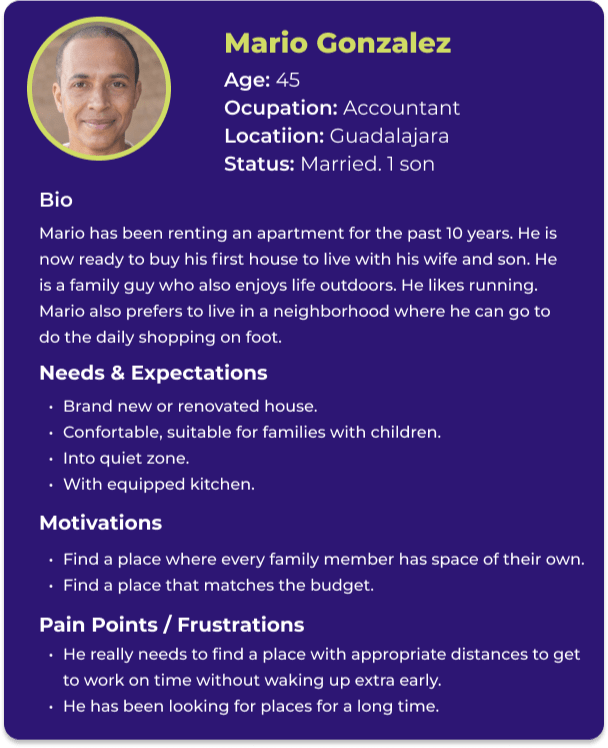
Ideation and Design
a/ Defining the MVP
The definition of the MVP, together with the client and the team, was key to achieve an agile project. It was defined that from all the analysis performed, we would have as a minimum viable product the buyer's path, and we would complete the process by searching for existing properties in the market, with an efficient and robust search engine.
b/ User Flow
All along the buyer's journey, we seek to know not only the technical specifications that the end user has, but also those features that represent the lifestyle he wants to achieve. With this onboarding, we truly got to know the user in order to adjust specifically to what he and his family needs.
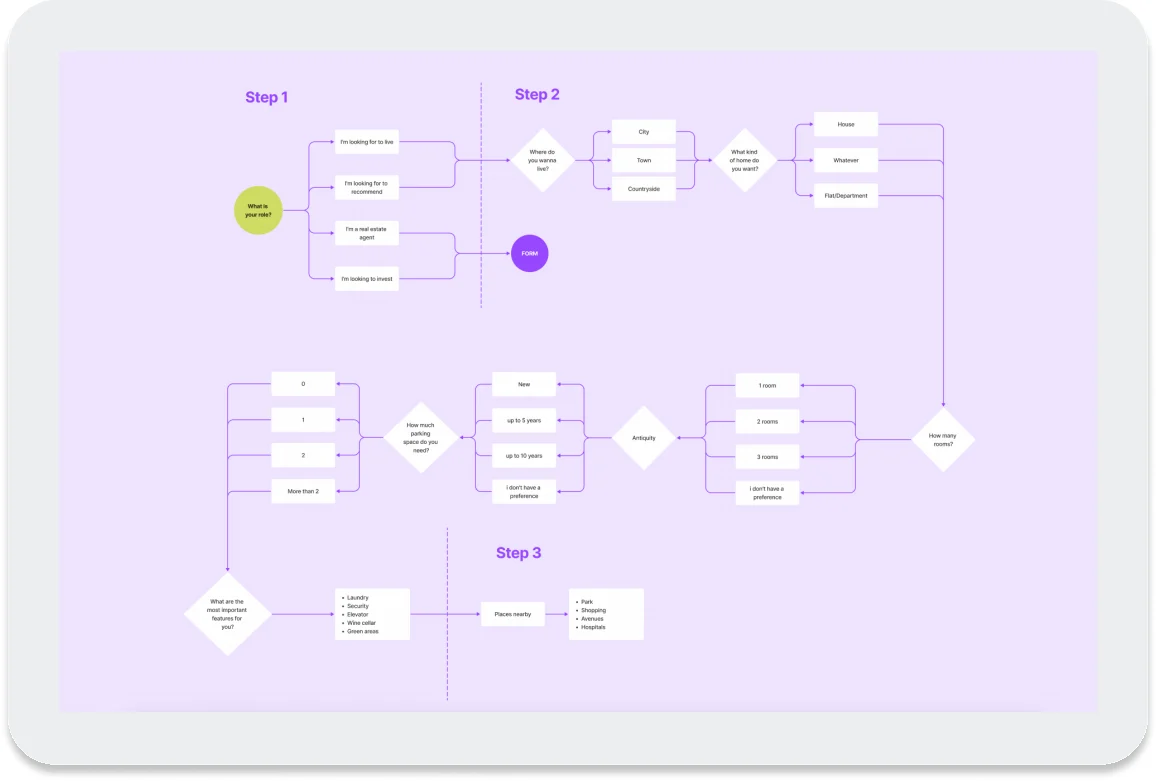


Development
a/ Frontend
The development of the front end was made considering that the needs of users change constantly, and if we wanted to have an onboarding adapted to it, we should allow periodic modifications. To achieve this, we use React and NextJS technologies.
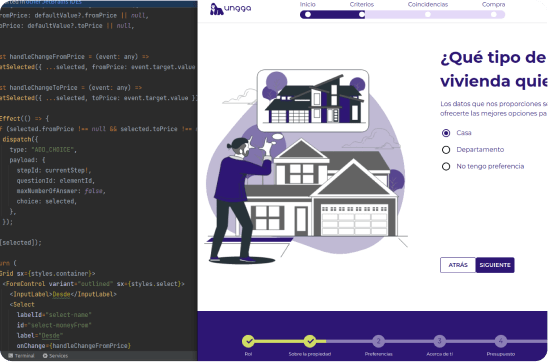
b/ Backend
The back end was designed to respond to the needs of the front end, and also included the creation of two fundamental algorithms for the correct execution. On the one hand, a "scraping" algorithm has searched the properties offered in the market for those that match the user's needs, with a relative weight calculated according to the user's knowledge. On the other hand, a matching algorithm filtered the best opportunities for the end user. These automations ensure that the product is scalable over time, offering an unprecedented experience. We work in Python using the Django framework.
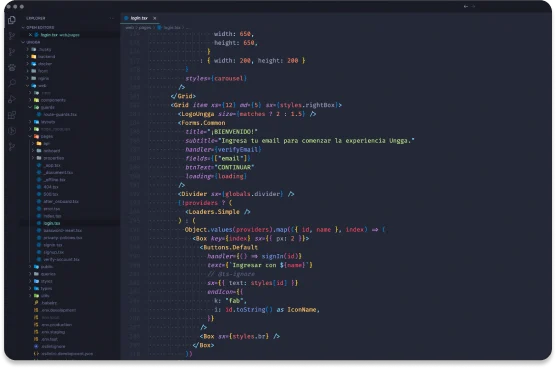
c/ Testing
The testing performed during development helped identify errors, guarantee a reliable software and ensure clients satisfaction. It also guarantees the quality of the product and reduce subsequent maintenance costs.
Final Proposal
In conclusion
Developing Ungga from scratch was a huge challenge that brought a lot of satisfaction.
We achieved a close relationship with the client, we worked as an integrated team with the different functional areas, achieving a synergic work and an innovative proposal.
